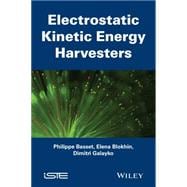Harvesting kinetic energy is a good opportunity to power wireless sensor in a vibratory environment. Besides classical methods based on electromagnetic and piezoelectric mechanisms, electrostatic transduction has a great perspective in particular when dealing with small devices based on MEMS technology. This book describes in detail the principle of such capacitive Kinetic Energy Harvesters based on a spring-mass system. Specific points related to the design and operation of kinetic energy harvesters (KEHs) with a capacitive interface are presented in detail: advanced studies on their nonlinear features, typical conditioning circuits and practical MEMS fabrication.








